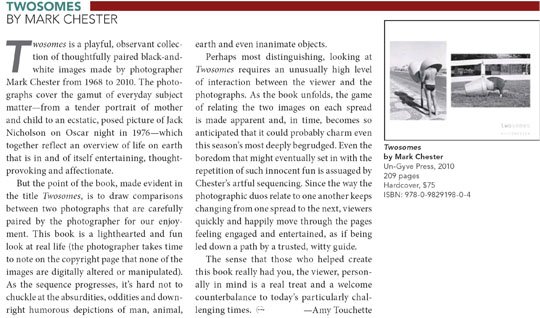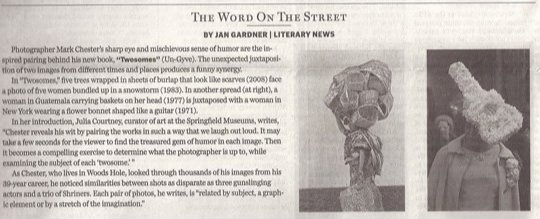Center Stage with Pamela Kuhn
… it really comes in the sense to me of texture and color am I on the right road there Joan Goldin can I bring you into this?
I worked with mostly black and white but I have moved into color because I find it expresses, now, more how I feel, I can walk into a garden and … at one point I would have planted myself in the dark, I would have dug down as in the peat bogs in Ireland, which I love, and that’s my thinking. I’m thinking, also, the work kind of expresses what is going on in the world for me, as nature becomes tighter and tighter and more insular so my work often goes to the dark side, even though I use color, I can keep it buoyant with color, but in my head often it’s the dark side. So, I can wander in that garden and I can look up and I can look down, I can look on the cellular level as I could in medicine, I look for boundaries, and a place for myself in this garden. We’re always trying to find who we are, we don’t know who we are, so that’s my origin. That’s my thinking in most of my work.
But you know Joan this is interesting to me because your background is fascinating can you tell us a little bit about yourself as a medical illustrator?
Ah, yes, I, I actually, I started when I was eleven or twelve years old going to a first autopsy—that would’t happen now—but I always wanted to know what was under the skin. And I always thought that I couldn’t draw if I didn’t know; I couldn’t draw the figure unless I knew what was under the skin. So that kind of led me to medical art. I had surgery at the age of thirteen and I was drawing in my room and a resident came in and said “oh, why don’t you look into medical art” and so I did—
This is fascinating
—yeah, so, I, that was a trajectory, so it’s to medical school. I would have loved to have been a surgeon but my hand stays in a two-dimensional space, so.
Because I think there is a direct correlation between doctors and art, of course, I’ve talked about this before on Center Stage um but, Joan, it’s interesting to me you know when you talk about that kind of illustration which is so specific but yet what you have on display at the Flinn is to me is very broad and open and wondrous. You’re inviting us into this huge space, so have you morphed in your life, you know to that point?
Well, not really. In surgery, in the field of surgery, you can focus on something quite specific in a small territory, a small area, but the area around it is more flexible, you know, it can be a little more fresh, or freer in expression. So I kind of pulled some of that into some of this medical work; I did a surgical atlas on cancer surgery, that took five years and a lot of focus sites.
You know I've got to tell you right now that eleven or twelve I would have just died if I’d seen a dead body I think. I mean I don't think I could have done this but you, you must have been destined to have that curiosity and about the form and my gosh you should be writing books you should be writing bestsellers, become the medical examiner, I mean it.
I didn’t even, I didn’t have nightmares.
Really interesting wow okay so but you’re also from Chicago.
Yes.
And um, and you, it’s mind-blowing to me about your background really and you’ve been a PhD candidate from the European graduate school in Switzerland; I mean was this all within art, you know your MFA at Bard and of course your, your um BFA at Art Institute of Chicago so you’re within the world of art completely now.
Yes, but, I also wanted to bring language in, it was a little over my head, it was another craft, another art form. I found it very difficult, very challenging. And I went through the course, I didn’t finish the PhD, I didn’t want to spend seven years in language, I wanted to go back to two dimensions, so canvases, but I certainly learned so much and it pushed a direction, it challenged me to the point where, I still, I love reading from philosophical books, I love playing with language, bringing language into my work, and my work often begins with language, I can sit and I can read for hours and all of a sudden, oh yeah, I’ve got an idea now. And so you dig through words and then it ends up on a canvas.
you're bringing us life which I I think is is most wondrous um Joan to that end I'm very interested in photography myself and I know that you are too in the combination of prints and paintings and and photographs how does photography figure into this exhibition in your art
Photography is, I would say central, because I can, I can get to my topics or my images fast, I, I can’t over think, so it begins as a photograph. Of course I photographed in surgery, because I had the radical surgery book that I did, you saw it one time, two times, maybe that’s it, we were lucky to get a procedure that we could photograph, so, I couldn’t illustrate it unless I had some very specific images. But it works for me, and it was very difficult, I love analog, I love the, I like film, film has an emulsion, and when that was taken away from me I was very sad, and had to reinvent myself, so that’s when I began to paint over photographs, and try to introduce, reintroduce, that, the link between, that space that is luminous that I lost in digital. Digital, it’s very interesting, digital works very well for me now, but I integrate the two. The immediate photograph and the digital now. It’s another iteration for me now.
… is there any kind of central message to your work just very short if, if I had to ask you for one phrase you know that’s what is your work about …
I think, movement, change. Change is a big word for me. That’s why I keep repeating over and over because I want to keep moving, when is the end; I’m not looking at the end, I’m looking at the process.
There you go.
So keeping motion going.
I have to ask you is there one word or phrase that you can share with us that allows your audience to really know the part of who you are what would it be?
Breaking boundaries. Duration is a big word for me.
Oh well uh, I I breaking boundaries the boundaries uh duration, I, I would say duration. Duration is a big word for me.
















































































